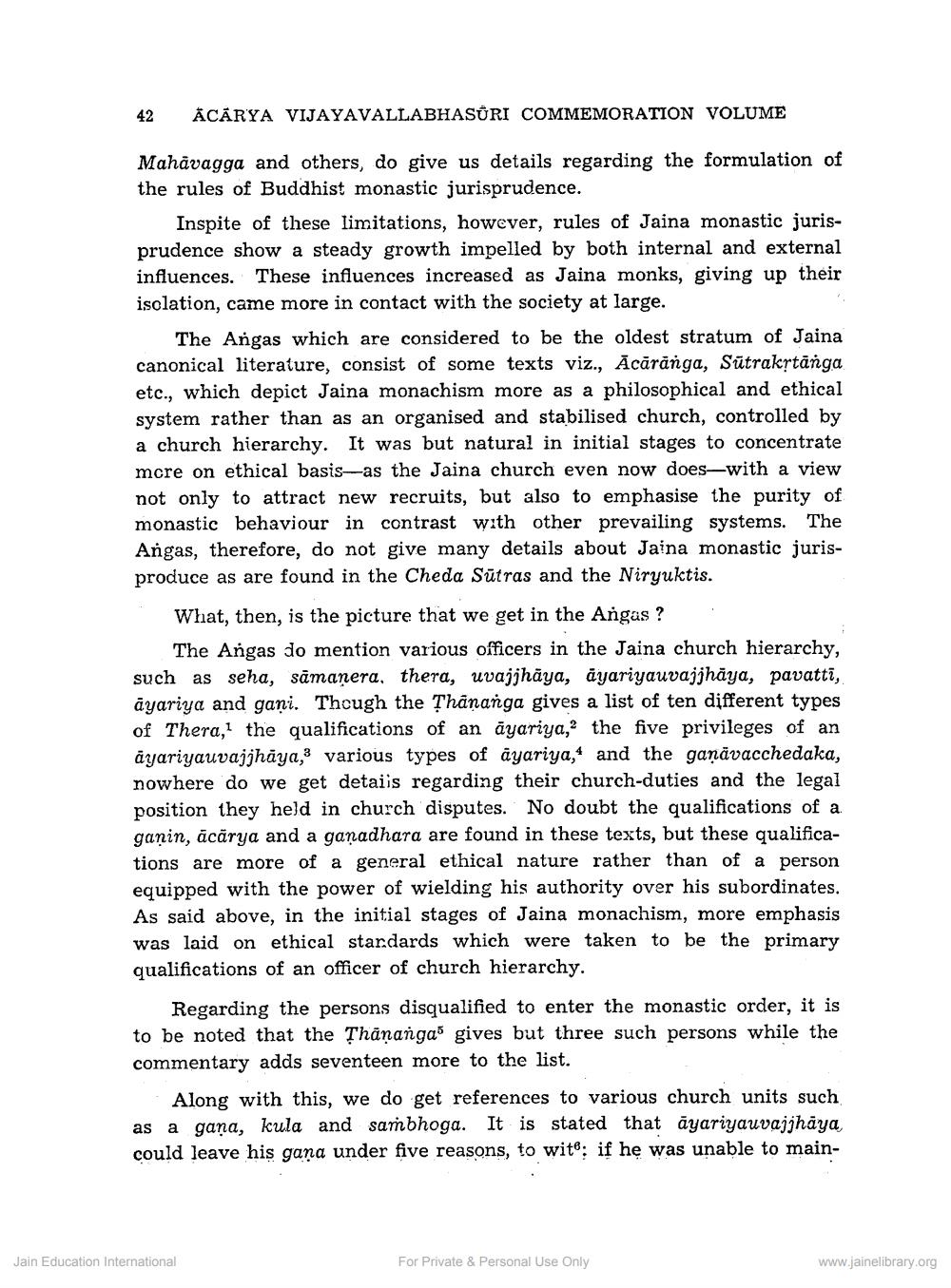Book Title: Some Aspects of Jaina Monastic Jurisprudence Author(s): S B Deo Publisher: Z_Vijay_Vallabh_suri_Smarak_Granth_012060.pdf View full book textPage 2
________________ 42 ACĂRYA VIJAYAVALLABHASŪRI COMMEMORATION VOLUME Mahāvagga and others, do give us details regarding the formulation of the rules of Buddhist monastic jurisprudence. Inspite of these limitations, however, rules of Jaina monastic jurisprudence show a steady growth impelled by both internal and external influences. These influences increased as Jaina monks, giving up their isclation, came more in contact with the society at large. The Angas which are considered to be the oldest stratum of Jaina canonical literature, consist of some texts viz., Ācāränga, Sütrakstānga etc., which depict Jaina monachism more as a philosophical and ethical system rather than as an organised and stabilised church, controlled by a church hierarchy. It was but natural in initial stages to concentrate more on ethical basis-as the Jaina church even now does—with a view not only to attract new recruits, but also to emphasise the purity of monastic behaviour in contrast with other prevailing systems. The Angas, therefore, do not give many details about Jaina monastic jurisproduce as are found in the Cheda Sūtras and the Niryuktis. What, then, is the picture that we get in the Angas? The Angas do mention various officers in the Jaina church hierarchy, such as seha, samanera, thera, uvajjhāya, ayariyauvajjhāya, pavattī, ayariya and gani. Though the Țhānanga gives a list of ten different types of Thera, the qualifications of an āyariya, the five privileges of an ayariyauvajjhāya, various types of ayariya,* and the gaṇāvacchedaka, nowhere do we get detaiis regarding their church-duties and the legal position they held in church disputes. No doubt the qualifications of a ganin, ācārya and a ganadhara are found in these texts, but these qualifications are more of a general ethical nature rather than of a person equipped with the power of wielding his authority over his subordinates. As said above, in the initial stages of Jaina monachism, more emphasis was laid on ethical stardards which were taken to be the primary qualifications of an officer of church hierarchy. Regarding the persons disqualified to enter the monastic order, it is to be noted that the Thānangas gives but three such persons while the commentary adds seventeen more to the list. Along with this, we do get references to various church units such as a gaña, kula and sambhoga. It is stated that ayariyauvajjhāya could leave his gana under five reasons, to wite: if he was unable to main Jain Education International For Private & Personal Use Only www.jainelibrary.orgPage Navigation
1 2 3 4 5 6 7 8 9 10 11 12 13 14
